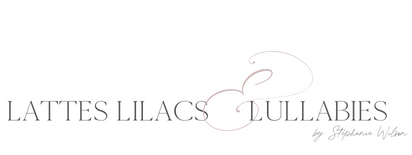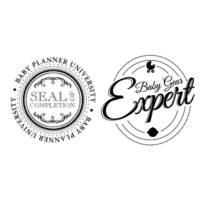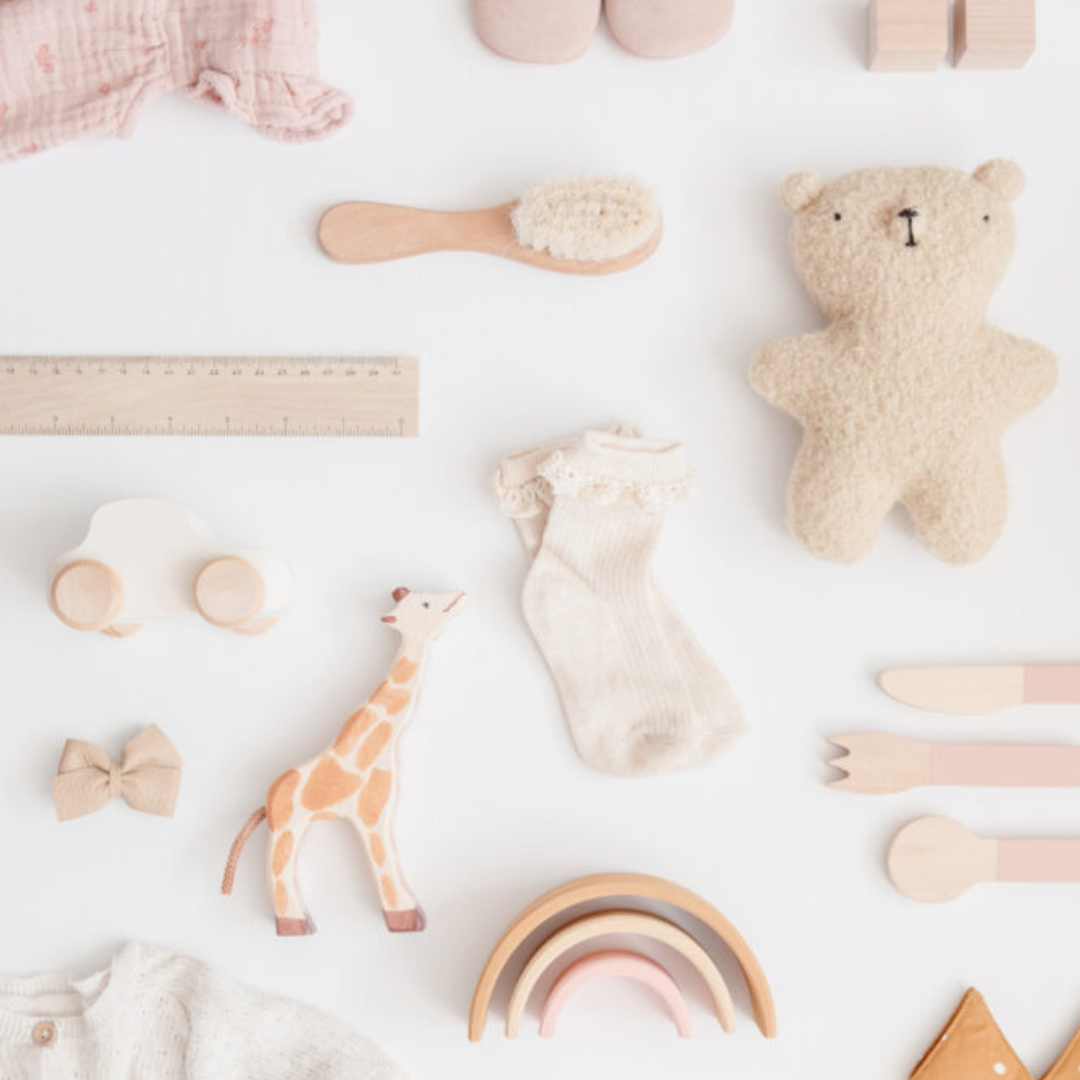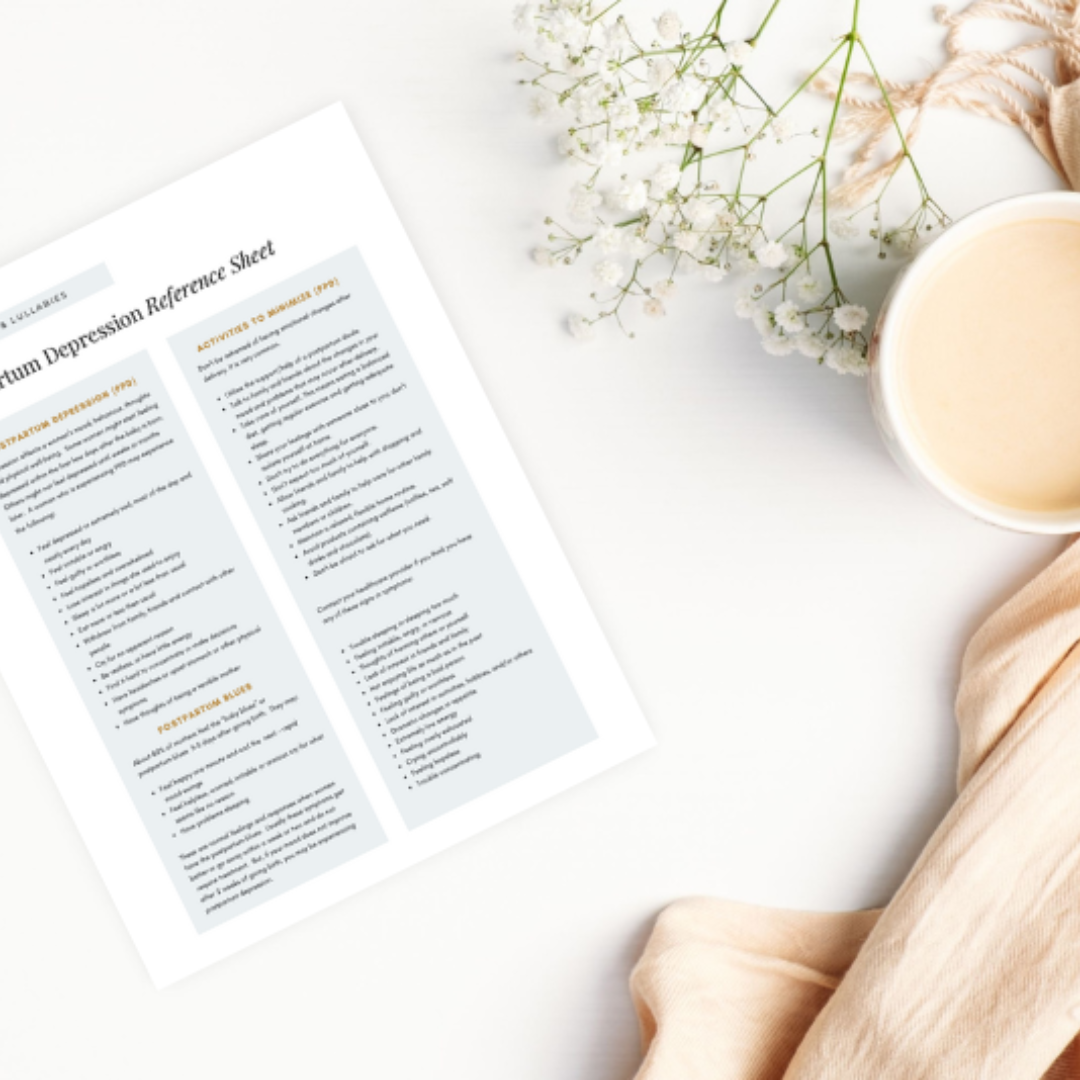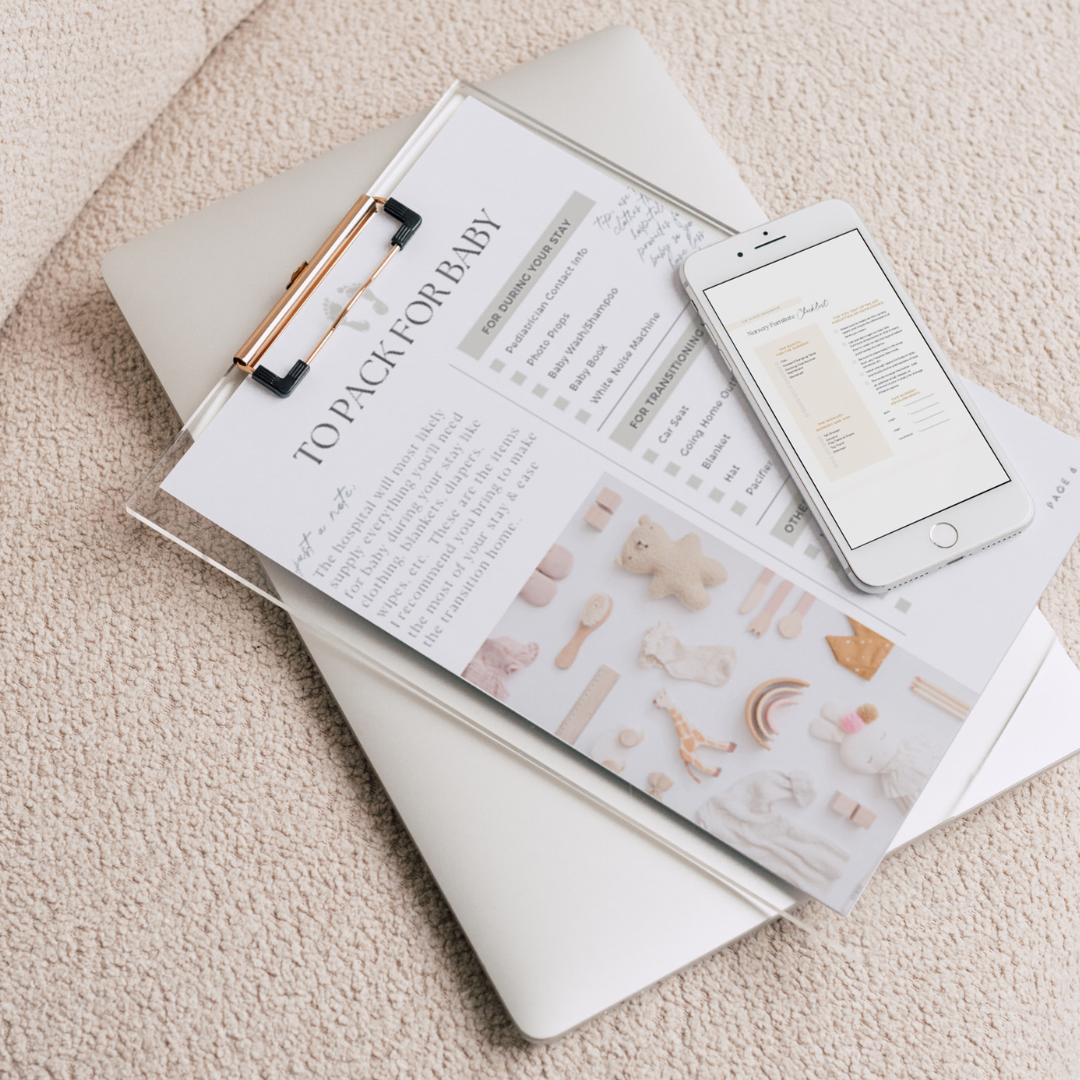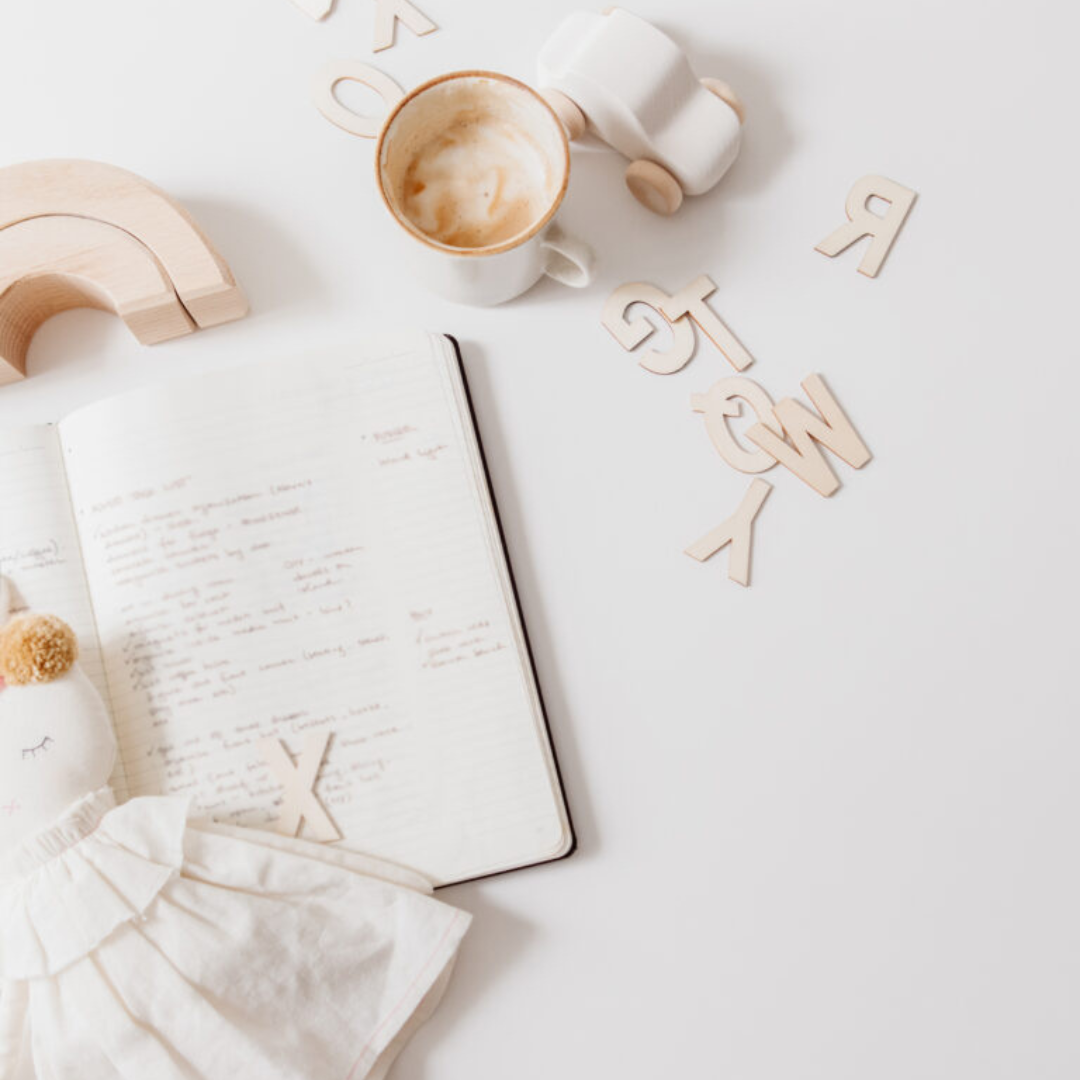Formula feeding your baby doesn’t have to be overwhelming. Whether you are supplementing and breast feeding or strictly formula feeding, these tips are for you! I’ve gathered these tried and true techniques after years of working with brand new moms and dads just like you! So, let’s get started…
{We are a participant in the Amazon Services LLC Associates Program, an affiliate advertising program designed to provide a means for us to earn fees by linking to Amazon.com and affiliated sites. To learn more about affiliate links, click here!}

1. Be Proud Of Your Feeding Choices!
I’ve seen so many new moms struggle with their decision to give formula instead of breast feeding or in addition to breast milk. Often times they are fearing the opinions of others, struggle with doing what’s right for themselves or their babies, and play tug of war with their new-found mommy guilt.
What I love to see, is second or third time moms come back to the hospital and “own” their feeding choice. They’ve been around long enough to see that formula can be a God-send to parents worried about feeding their babies, and know that the time they spent struggling with the decision before was a waste of time and energy.
So, sweet friend, if you too are choosing to formula feed your baby…OWN IT! Maybe you’ve tried breast feeding and it’s not comfortable, not something you really enjoy, or perhaps your baby is difficult to latch. Or, maybe your milk supply is slim to none even though you’ve spent countless hours and sleepless night trying to latch your newborn or hooked up to a breast pump. These things happen. You never truly know how breastfeeding will go until you try it, right?
Don’t spend time beating yourself up. Fed is best in the baby world. Remember that.
Fed is Best in the world of babies!
Even some of the best lactation consultants in the world (i.e. my the fabulous LC’s I have the pleasure of working alongside) will tell you that there are instances when formula is necessary and even a better option for you and your family. The way you decide to feed your baby is a personal and important choice. Own it, sweet friend, and drop any guilt you may have. Spend that energy enjoying your mommy hood and relishing in your brand new squishy babe.
Related Post: Breastfeeding Vs. Formula- The Truth About Feeding Your Baby
2. Choose the Right Formula For Your Baby
Not all formulas are made the same, however I don’t want you to spend forever stressing over this tip either. The three most popular brands are Similac, Enfamil, and Good Start. There are a plethora of other options such as soy-free, organic, as well as specialty formulas in case your baby struggles with digestion such as Nutramigen.
If you begin formula in the hospital, we may suggest a formula to you based on your baby’s needs. For instance, some formulas have higher caloric value and are necessary for premie or smaller babies. Here’s one important tip when it comes to choosing the right formula…
Don’t change up your baby’s formula on a whim! Talk to your pediatrician first.
Newborns need time to figure out how to suck, swallow, and breathe which can be a mighty big task whether they are breast feeding or bottle feeding. Just because you give your baby a bottle, that doesn’t mean he’ll understand what to do with it at the very beginning. There may be some spitting and vomiting, some gassiness and upset tummies. This is all normal.
But, sometimes when parents see their baby struggling to drink from the bottle or spitting some of it up later on, they assume their baby is allergic and go from one formula to the next. This can wreak havoc on your baby’s tummy. Give your baby time to adjust to their formula. Talk to you pediatrician about your concerns, and formulate (pun intended) a plan together to help your baby LOVE feeding time.
Related Post: Newborn Care 101- What You Really Need To Know When You Leave The Hospital
3. Find the Best Bottle For Your Baby
Another part of the formula-feeding puzzle is finding the right bottle. I’ve share my favorite bottles here (which are perfect for breast feeding babies also in case you’re supplementing). The right bottle can make or break your baby’s feeding experience, and you may not get it right the first time.
Before investing in a ton of bottles, buy one or two to try at the beginning. If you’re baby does well, buy as many as you think you’ll need. However, don’t get discouraged if your baby needs to try a few different bottles before finding the right one.
Here are some things to consider when looking for bottles…
- Slow-Flow Nipples- are a must for newborns. This way your baby won’t drown in the formula since the nipple automatically slows down the flow to the baby.
- Vented System- look for vented systems and anti-colic features to decrease the amount of air baby gets while feeding which will decrease baby’s gassiness later on.
- Material- look for BPA-free plastic bottles or silicone for safer feeding options especially if you plan to warm up the formula for baby. Most bottles have to follow these safety standards, but if you purchase them second-hand or are given bottles from a friend, they may not meet today’s standards. Just be cautious of that.
4. Warm The Bottle For A Happy Tummy
Most baby’s like their bottles warmed up a bit, especially if they’re used to getting some breast milk as well. Breast milk is warm since it comes from your body, so that’s why most baby’s like their formula warmed as well.
DO NOT put baby’s bottle in the microwave. This can create hot spots in the formula and in turn burn your baby’s mouth. Ouch!
Instead warm baby’s bottle in a bottle warmer that you purchase, or place it in a cup of hot water (this is great option if you’re at a restaurant and not sure how to warm the bottle).
Of course, if you have the money to invest, buy a Baby Brezza that’s like the Keurig of the bottle world. It mixes and warms your baby’s bottle to the perfect temperature and consistency with the touch of a button. It’s a must-have for formula-feeding mamas everywhere!

5. Position Your Baby The Right Way For Feeding
Another tip when feeding your baby, is to remember baby’s position. Babies should be sitting upright during feedings, and typically after feedings for at least 30 minutes if possible to prevent spitting up. DO NOT lay your down or home him in a position with the bottle vertically pouring into his mouth. Also, it’s unsafe to prop a baby’s bottle in their mouth using pillows or blankets while they lay down and eat. This is a HUGE choking hazard as young baby’s don’t have the dexterity to pull the bottle from their own mouths to breathe and stop the flow of formula.
Another reason to hold your baby upright during feeds is that babies Eustachian tubes in their ears are straighter than our those in our adult ears, and lying a baby back during a feeding can cause formula to actually go into their ears causing infections.
What is Paced Bottle Feeding?
So, I always show my new parents, a technique called Paced Bottle Feeding. Simply place the baby in your lap in a sitting position which one hand supporting baby neck and back and the other hand holding the bottle. The bottle is then introduced to baby at a horizontal angle. This allows the baby to actively suck to receive the formula versus having it simply drip in his/her mouth. This is an especially helpful technique if you do plan to still try to breast feed and need to supplement for the time being.
Paced Bottle Feeding causes the baby the be an active participant in their feeding by making them suck for their food. Plus they’re in a position much like we are when we eat. I mean, have you ever tried to take a drink while laying flat? It doesn’t work to well, does it?
6. Burp Your Baby Often During Feedings
Formula fed babies will need to be burped after every feeding since they do suck in some air with the formula from their bottles. You may want to feed your baby half of his/her feeding, stop to burp, and then finish the feeding. Burping is really easy in the sitting up position we use for paced bottle feeding.
Here is an example of how a feeding could go…
- Check and change baby’s diaper before feeding, that way if he falls asleep afterwards you’re not waking him to change his pants.
- Gather bottle, burp cloth, and pacifier (sometimes baby’s like to suck after a feeding during burping because they enjoy the sensation of sucking…it relaxes them)
- Sit baby in upright position on lap, cover baby’s chest with burp cloth, and then introduce the bottle
- Feed half of the feeding
- Stop and burp the baby- put bottle down, use bottle hand to support baby’s body by holding underneath the burp cloth on baby’s chest/chin, use opposite hand to burp the baby’s back. Sometimes simply moving baby into this slightly different position, will cause your baby to burp. If not, simply tap baby’s back or give a gentle rub along the spine to encourage your baby to burp. Give your baby a couple of minutes to burp. If he/she doesn’t, that’s o.k.
- Give the remainder of the feeding
- Offer a pacifier for continued sucking (especially if your baby get upset when they’re bottle is empty)
- Now you can burp your baby in the position we did before, or move the burp cloth up to your shoulder and place baby on your chest with her head resting on your shoulder for cuddles and burping. In this position, your baby may fall asleep while you hold her upright for a little while to avoid major spit ups. (Don’t lay your baby down on his back to sleep right after a feeding, this may cause him to “lose her lunch” if you know what I mean! If you must move on to a task or tend to other children, place your baby in a bouncy seat or swing where he’ll be upright.)
More burping tips for newborns…
Also another tip I’ve gathered after years of working with newborns, your baby may not burp after each feeding and that’s totally normal. Try burping your baby when he gets fussy or even before a feeding if he’s been crying during his diaper change. Crying causes them to suck in air as well, making them gassy.
And, some bottle fed babies get fussy about an hour after a feeding. I know this because this is when I’m often called back to a patient’s room where parents are wondering if they fed their baby enough or why their baby woke from a sound sleep screaming. Usually an hour or so after a bottle, they need to burp. Simply sit the baby up in their sleep environment, pat their back until they burp, lay them back down, and oftentimes they go right back to sleep.

7. Follow Your Baby’s Cues
Learning to follow your baby’s cues is one of the top priorities for new moms. It can be really hard at first to understand what your baby needs and why he/she is crying. So, here’s a few more tips from me to you…
Just because your baby is crying, doesn’t mean he’s hungry. There could be a few other reasons your baby is upset, especially if you just finished a bottle. Check your baby’s diaper, burp your baby, or hold and snuggle him.
New babies especially deal with something called gastric colic when they’re first learning to eat. They’re not used to feeling gas or digestion, or even the sensation of pooping and peeing, and these new experiences can completely freak them out. Often times new parents, think this dramatic crying means that baby simply is still hungry and didn’t get enough to eat.
First, offer a pacifier or your finger to suck on. Soothe your baby for a few minutes and see if he/she is still upset. If your baby likes to suck for comfort, he’ll probably find this soothing and fall back to sleep. Adding more formula to his tummy could make things worse.
If baby is still having a hard time soothing, it may be time to increase the volume on the feedings. As baby’s grow, obviously they need more to eat. So talk to your pediatrician about feeding goals and exactly how much your baby should be eating. I’ll leave a guide below for quick reference.
Gas drops are a lifesaver for babies with tummy troubles. Talk to your pediatrician before starting gas drops and get his recommendation for the one he thinks is best….there are so many options out there. If you find that your baby seems like he’s in pain, straightens his legs, screams and cries after feedings, etc…gas drops may just be the ticket to better feedings and a happier baby. So talk to your doctor.

8. Prepare For Nighttime Feedings Before Bed
Nighttime feedings can be stressful, especially at the beginning. So, my last and final tips for you today, is to prep for feeding ahead of time. The Baby Brezza machine makes this super simple, since it practically makes your bottles for you. But, before going to bed, set out all of the items you’ll need for feedings that night…bottles, nipples, formula, burp cloths, etc.
Keep everything accessible and easy to find, so you can feed baby and get back to sleep in a hurry.
Yes, formula-fed babies still need to eat throughout the night, especially in the first few weeks of life when they may experience some initial weight loss. Eventually you’ll be able to wean your baby from those nighttime feedings so you can catch more Zzzzzz’s. But, until them, preparation makes feedings that much easier.
I hope you found these tips helpful. What are your go-to tips for feeding your baby? Leave them in the comments below!


